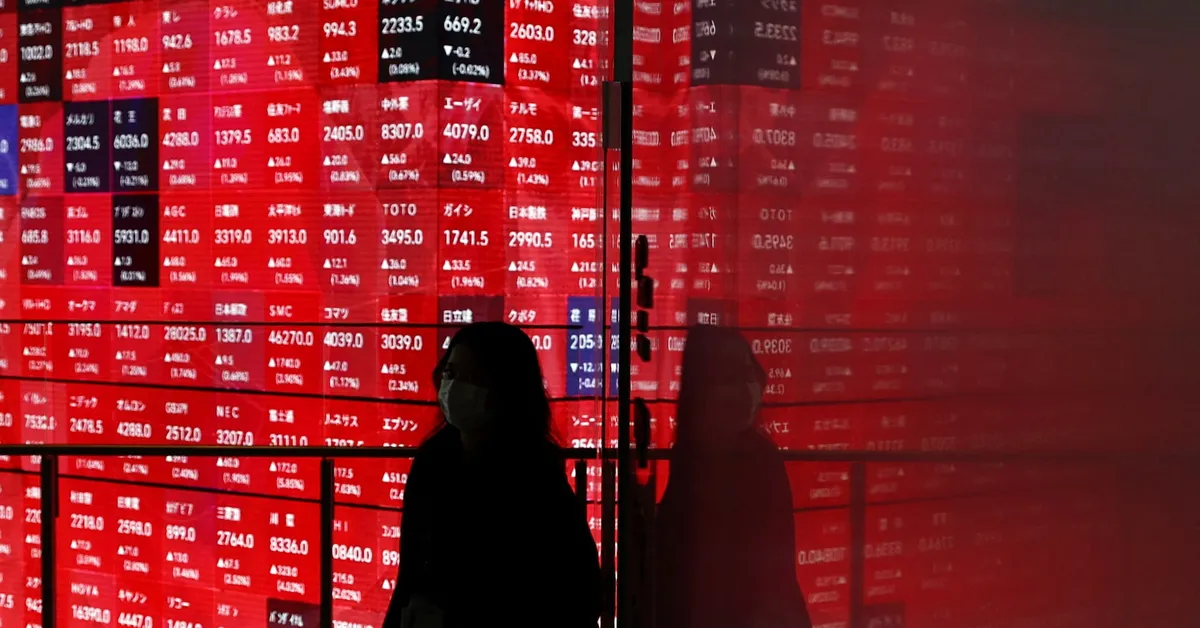
On April 28, 2023, Asian share markets and the U.S. dollar opened cautiously as confusion surrounding U.S. trade policy continued to loom large. This uncertainty comes at a time when the market is anticipating a week filled with significant economic data releases and major tech earnings announcements. Despite President Donald Trump's claims of progress in trade negotiations with China and other nations, no substantial evidence has emerged to back these assertions.
On Sunday, Treasury Secretary Scott Bessent did not support Trump's optimism regarding ongoing tariff discussions with China, further deepening the uncertainty. According to Christian Keller, head of economics research at Barclays, the confusion surrounding trade policy is proving to be as detrimental as the tariffs themselves, negatively impacting the U.S. economy as much as it affects the global market. Keller warns that many companies may opt to "hunker down" until there is greater clarity, raising the likelihood of a recession.
In early trading, EUROSTOXX 50 futures rose by 0.3%, while both FTSE and DAX futures increased by 0.2%. Conversely, S&P 500 futures fell by 0.4%, and Nasdaq futures dropped by 0.5%. The S&P 500 has bounced back nearly 12% since its trough on April 8; however, it remains approximately 10% below its peak. Corporate earnings reports have been generally positive, showing gains of over 9%, although Bank of America noted a decline in the percentage of companies beating earnings per share (EPS) estimates—64% this quarter compared to 71% the previous quarter.
This week is laden with important economic indicators, including U.S. employment figures, gross domestic product (GDP) data, and core inflation metrics. Analysts predict that payroll numbers will rise by 135,000, while inflation is expected to moderate. However, there is considerable uncertainty regarding GDP due to a surge in gold imports, which is likely to skew the headline figure lower. The median forecast anticipates a modest 0.4% annualized growth, yet the Atlanta Fed's GDPNow model estimates a contraction of -0.4% when excluding gold.
The jobs report is anticipated to refine market expectations regarding Federal Reserve policy, with futures currently indicating a 64% chance of a rate cut in June and a total of 85 basis points in easing by the end of the year. Jonas Goltermann, deputy chief markets economist at Capital Economics, expects another strong non-farm payrolls figure, which could challenge the prevailing expectations of a rate cut in June and support the dollar's recovery from recent three-year lows.
However, Goltermann cautions that the Trump administration's unconventional policy approach may cause lasting damage to confidence in the U.S. as a safe haven. As a result, the dollar remains vulnerable to the administration's unpredictable decisions. The dollar index was stable at 99.695, above last week’s low of 97.923, while the euro traded at $1.1350, below its recent peak of $1.15783.
This week, consumer price data from Germany and the eurozone is expected to show a further decline in headline inflation, reinforcing expectations that the European Central Bank will implement additional rate cuts at its June meeting. The Bank of Japan is also scheduled to meet this week, with expectations that it will maintain its current rate of 0.5%, given the economic and trade uncertainties stemming from U.S. tariffs.
The dollar has risen to 143.65 yen, recovering from last week's seven-month low of 139.89, although it remains over 4% lower for April. Additionally, U.S. Treasuries have stabilized following Trump's assurance that he would not attempt to remove Fed Chair Jerome Powell, keeping 10-year yields at 4.235%, compared to the April high of 4.592%. This tentative improvement in market sentiment has led to a decrease in gold prices, which fell to $3,307 an ounce from its all-time peak of $3,500.
In the oil market, prices began the week quietly, having been under pressure in recent weeks due to concerns about a global economic slowdown and OPEC’s plans for increased supply. Brent crude rose by 13 cents to $66.98 a barrel, while U.S. crude gained 7 cents, trading at $63.09 per barrel. As the week progresses, market participants will be closely monitoring these economic indicators and corporate earnings, which could significantly influence trading sentiment.
Reporting by Wayne Cole; Editing by Muralikumar Anantharaman.